There aren’t many travel experiences more rewarding than having a close encounter with wild animals on African Safari holidays. Be it a lion, a whale, or a meerkat, it’s all about watching the animal go about its day and being briefly accepted into its world.
Over the years, hundreds of wildlife watching destinations have opened up around the world, but Africa is the undisputed birthplace of the wildlife safari. It comes as no surprise that this is the continent with the most diverse opportunities for wildlife watching. The options for African safari holidays are almost endless. So how do you find the one that is right for you?
To help you choose your ultimate wildlife adventure, I teamed up with the global community of travellers and bloggers and asked them to reveal their top African safari destinations.
The 19 options below represent personal recommendations and range from budget to luxury, from iconic to off the beaten track, and from organized safari to self-drive exploration.
This is Part 2 of the two-part guide to the Top Safari Holidays Destinations Around The World.
Volcanoes National Park, Rwanda
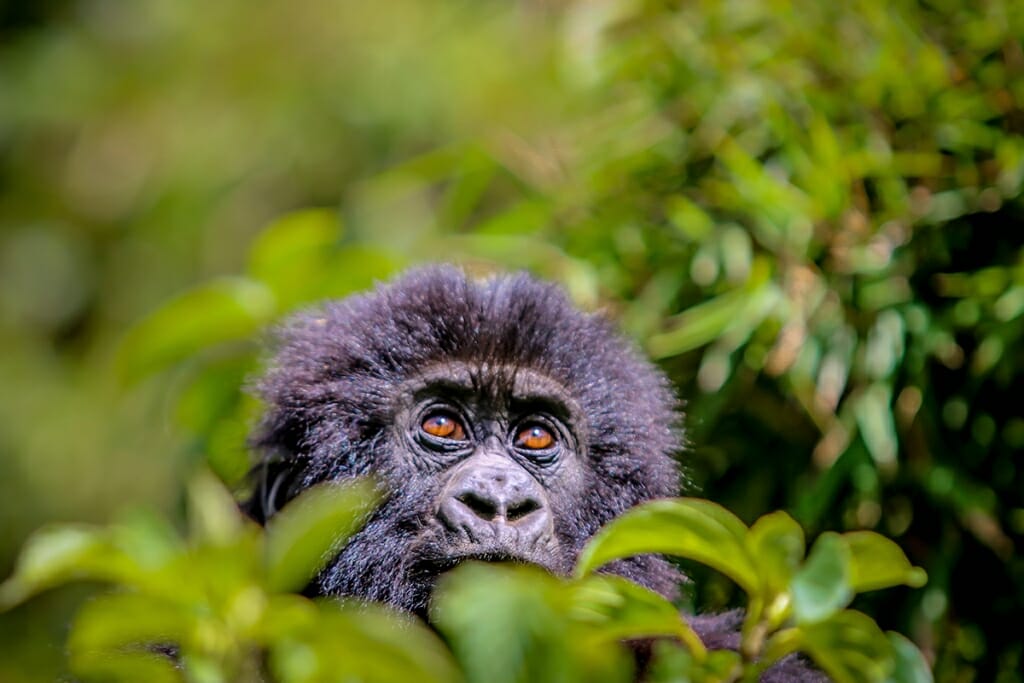
When you mention this landlocked East African country, the first thing most people think of is Hotel Rwanda and the mass genocide of nearly a million people back in 1994. But President Paul Kagame (former leader of the Rwandan Patriotic Front) has since brought a lot of infrastructure investment to Rwanda. The result is one of Africa’s most impressive safari destinations, and Volcanoes National Park is the jewel in the country’s ecotourism crown.
Volcanoes National Park is located in the northern part of the country in the volcanic Virunga Mountains, which straddle the border between Rwanda, Uganda, and the Democratic Republic of Congo. The area is best known for the endangered Mountain Gorillas that inhabit its dense forests, which were made famous (and habituated to human presence) in the 1970s and 80s by late primatologist Dian Fossey.
Thanks to conservation initiatives created by Fossey and continued today by the Dian Fossey Gorilla Fund, the latest census shows that the population in the Virunga Mountains continues to grow. Their total number recently exceeded 1,000 for the first time in decades.
Today hundreds of hikers, trackers, porters, and guides assemble at the park’s visitor centre every morning to coordinate one of the world’s most exclusive safari treks. There are currently 10 habituated gorilla families open to tourist visits, so trekking permits are limited to a mere 80 per day. It takes anywhere from one to three hours to hike to them, and you get one magical hour to hang out with them.
Recommended by Bret Love & Mary Gabbett @ Green Global Travel
Queen Elizabeth National Park, Uganda
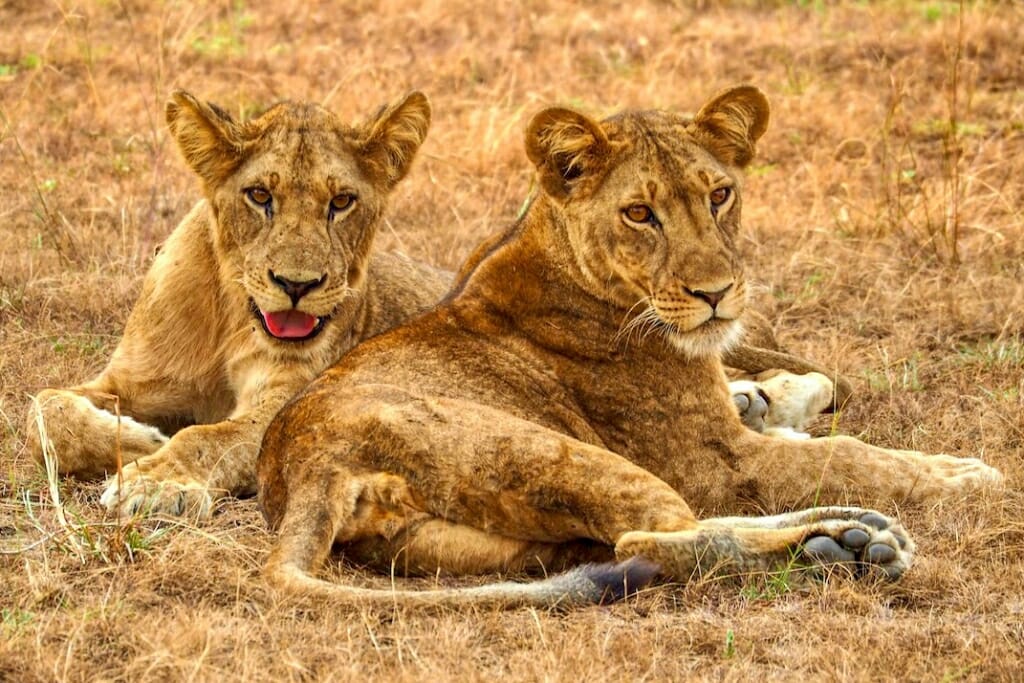
Queen Elizabeth National Park is a very popular destination in Uganda for wildlife lovers. Within the park, you can enjoy either a game drive across its savanna plains or a fabulous boat ride up the Kazinga Channel. Queen Elizabeth is home to a variety of wildlife, including elephants, hippos, buffaloes and our personal favourite, the lions.
We had our first real lion sighting in Queen Elizabeth National Park. On our first drive, we saw a couple of lions sitting up in a tree but we struggled to get close enough to photograph them. Because only researchers can venture off the track in the park, on a regular game drive it can be hard to get a good angle for photography. After all, the lions don’t get paid to pose for us!
But on our last game drive, we saw them up really close. We took a guided tour with a researcher who used radio tracking to locate two separate prides of lions for us. One lioness in each pride was fitted with a radio collar, which could be tracked using a directional antenna. Using this antenna he was able to find the lions very quickly.
We could also venture off track during this experience. That allowed us to get right up close to the lions, regardless of where they were in the park. We approached to within a few metres of them, which gave us some excellent photo opportunities. We could also observe them for a while and we especially loved seeing what the juveniles got up too!
If you ever visit Queen Elizabeth National Park, we highly recommend doing the lion radio tracking experience. It’s your best opportunity to see them up close.
Recommended by Cindy @ Free Two Roam
Phinda Private Game Reserve, South Africa
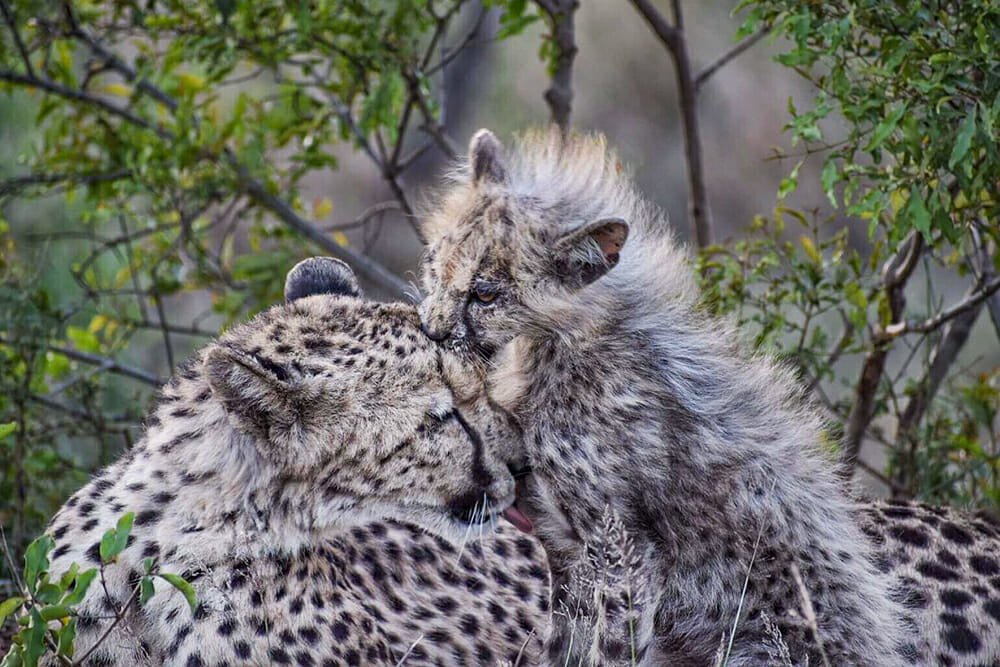
Phinda Private Game Reserve, in South Africa, is one of the best safari destinations in the world. The reserve is managed by And Beyond, a luxury tour operator that has a strong focus on responsible travel and that works hard on conservation, as well as on the involvement of local communities in its operations.
Phinda is located at about 3 hours drive from Durban, in KwaZulu Natal. It can be reached by car, but guests also have the option to fly to the local airstrip from either Johannesburg or Cape Town.
Game drives are on jeeps and they almost certainly guarantee the chance of seeing all of the Big Five. Animals such as lions, leopards and cheetahs, hyenas, elephants, giraffes, buffalos and hippos, wildebeest, zebras and even black and white rhinos are all spotted at Phinda, as well as an incredible variety of birds.
Game drives at Phinda start at 5:00 am when it’s still cool and animals are active and thus more easily spotted. Guests go back to the lodges for breakfast, and between the morning and afternoon drive (which starts at 4:00 pm) they can either relax at the lodge, by the pool, in the room and even enjoying a spa treatment, or they can go to the local village and visit local schools.
Game drives are conducted by a ranger with the aid of a tracker, who has an incredible nose and eyes for tracks! Phinda is a rather expensive place for African safari holidays, but it is – needless to say – worth it.
Recommended by Claudia @ My Adventures Across The World
Etosha National Park, Namibia
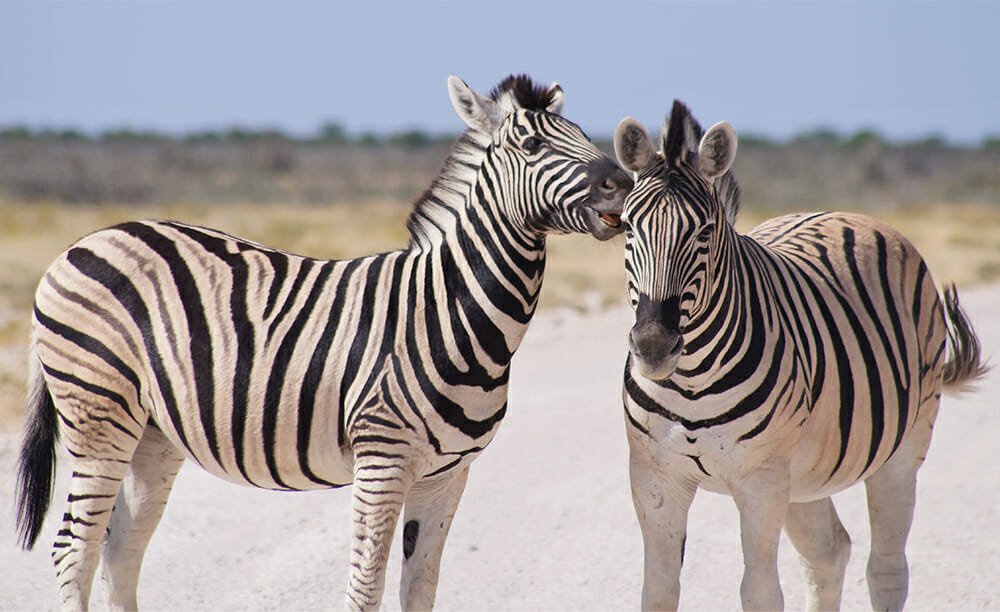
In 2018 we traversed Africa in a Land Rover with our boys (our youngest was 2) for 101 days. In this time we went on A LOT of safaris. But the best one for us was Etosha National Park, Namibia, and is the safari park I recommend to first-timers to Africa and those looking to safari with kids.
Firstly it’s very affordable, particularly compared to park entry fees and accommodations in safari parks in East Africa. Day entry for foreign adults is N$80 (£4.50), N$10 per standard vehicle (£0.57) and children under 16 are free!
Secondly, wildlife spotting is very easy due to the low-growing vegetation over flat open plains and the sheer abundance of wildlife. You can literally see for miles! There is only the grass for animals to hide in, therefore spotting of elephants, giraffe, zebras and even rhinos and lions is pretty much guaranteed. There are also many watering holes dotted across the park, the perfect spots to park up and watch the local wildlife come to drink and socialise.
Etosha is best experienced independently on a self-drive safari. Most of the roads throughout the park are suitable for 2WD (it’s only to the Western side of the park that a 4WD is required), and it’s well signposted.
Recommended by Jenny @ Travelynn Family
Skeleton Coast Park, Namibia
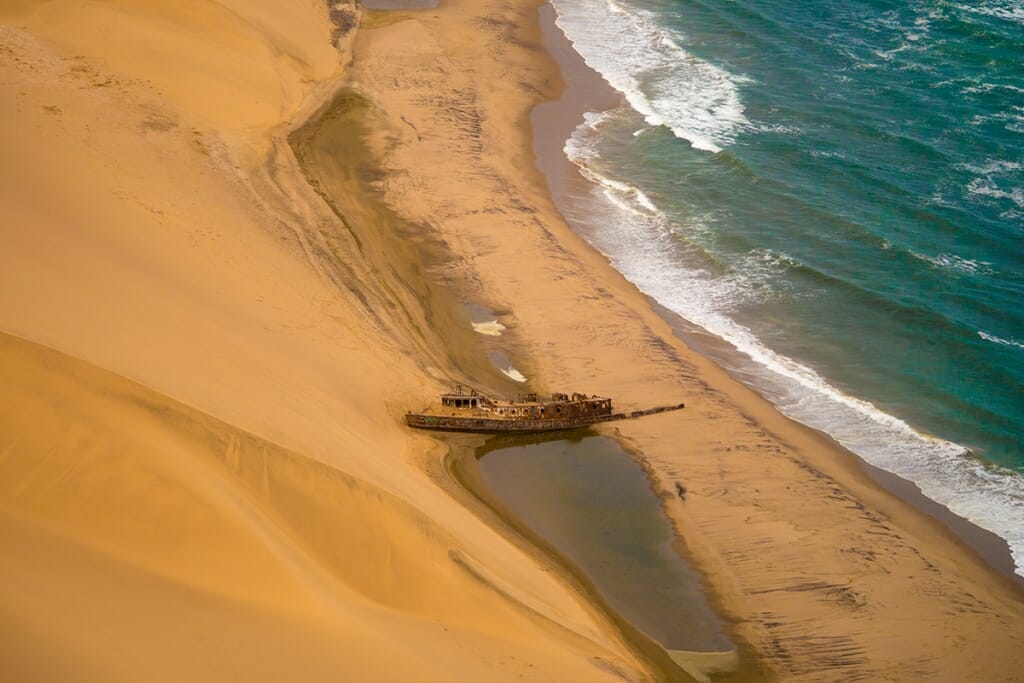
Extending from the Ugab River to the Kunene River that borders Angola, Namibia’s Skeleton Coast Park is a 500km coastal stretch of land along the Atlantic Ocean. It gets its eerie name from the skeletons of not only whales and humans but also ships that are scattered throughout the coast. In fact, it has the highest concentration of shipwrecks in the world.
The actual park, started in 1971, is a wilderness area where development and tourism are kept to a minimum with limited access. While the southern part of the park near Swakopmund is easily accessible with campsites, the northern part can only be reached by plane and is reserved to very few guests from the handful of resorts allowed in the area.
It is great to know that the Namibian government is serious about conservation and in fact, has included it in their constitution. The beauty of the desert landscape is breathtaking with formations from Jurassic age lava still present in the area the bushman once called “The Land God Made in Anger”. The area is covered in sand, dunes and wild oceans and is stunning from the air. It is quite a different kind of African safari holidays.
Among the dry desert landscapes, you can see springbok, giraffe, desert-adapted elephants, oryx, birds of all types, hyenas and jackals. There are also desert-adapted lions. Much further along, at Mowe Bay, there is a seal colony populated by 30,000 seals.
Recommended by Mar @ Once In A Lifetime Journey
Addo Elephant National Park, South Africa
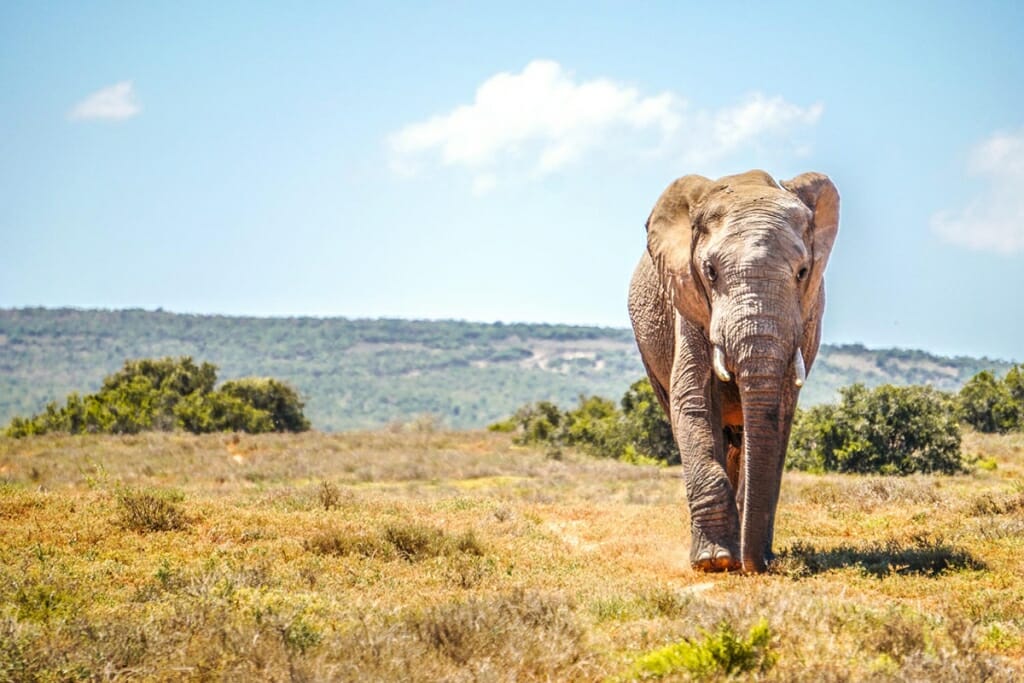
Addo Elephant National Park in South Africa is my favourite African safari holidays destination for so many reasons – but really, the huge range of wildlife you can see is the main one. Tucked away in the Addo region, around a seven-hour drive from Cape Town, Addo is one of the best places to go on safari in South Africa.
The name is a bit misleading – Addo offers you the chance of seeing a lot of wildlife, not just elephants. First started to protect the local herd of elephants from aggressive hunting in 1931 (at which time there were only 11 elephants remaining), the park has expanded over the years – today there are over 600 elephants and a large number of other species too.
In fact, Addo is the only place in the world where you can see the big seven (that’s lions, rhinos, elephants, buffalo, leopards plus Great White Sharks and Southern Right Whales).
You have good chances of seeing several of them throughout the course of one day. It is guaranteed to be a memorable experience. During my visit, we saw many elephants, buffalo and lions – in addition to several other wildlife species such as zebras and ostriches.
Safaris take place in jeeps and explore large sections of the park’s varying habitats. You can choose a number of different lengths, from one day to multi-day safaris, depending on the amount of time you have.
Recommended by Julianna @ The Discoveries Of
Kruger National Park, South Africa
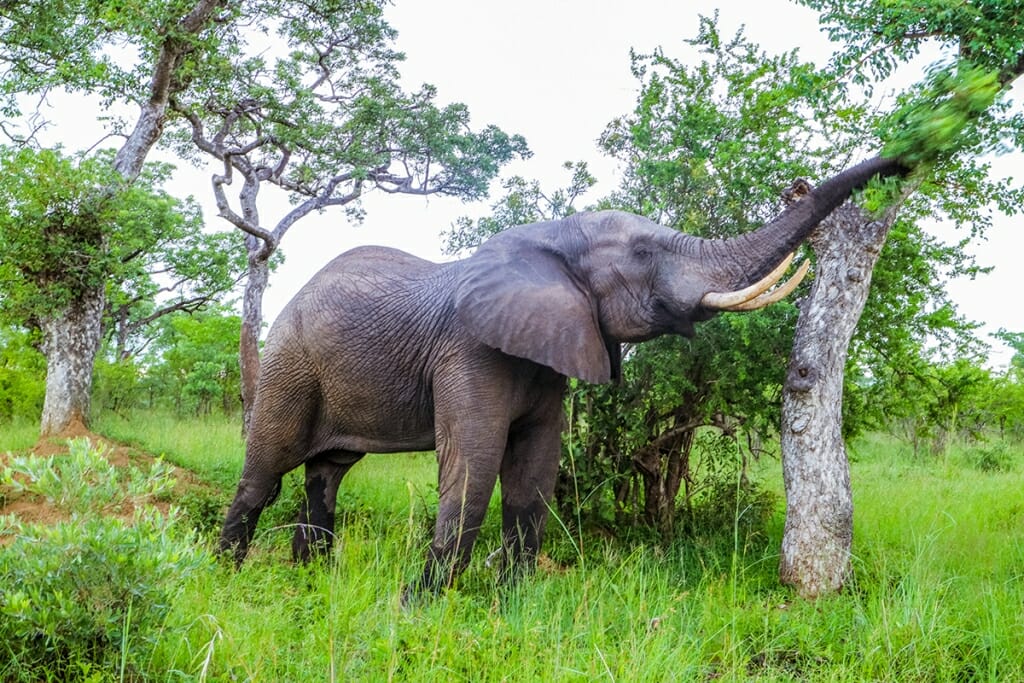
Raise your hand if you have ever dreamt about going on African safari holidays! With an area of about 20,000 km² (it is as big as Israel, just to give you an idea), Kruger National Park is one of the best destinations to go on your first African safari.
Prepare yourself to dive into the endless beauty of the savannah, which will conquer your soul with the power of wild nature and will fill your eyes (and your camera) with breathtaking sunsets and sunrises.
You will be spending your days in a 4×4 safari jeep while looking for the famous big five: elephants, lions, leopards, rhinos and buffalos. Besides the big five, you are likely to spot zebras, giraffes, hyena, impalas, gnus, crocodiles and a huge variety of birds. Choose between camping or staying in a lodge and get ready to experience a real adventure!
Although it is possible to drive your own vehicle, I highly recommend you to explore Kruger on a tour with a local guide. You will be safer and you will learn so much about the animals.
My favorite discovery? The African elephant has larger ears which resample the shape of the African content, while the Asian elephant has rounder ears, which resemble the shape of India. Isn’t it incredible?
Recommended by Cristina @ The Lazy Trotter
Sabi Sands, South Africa
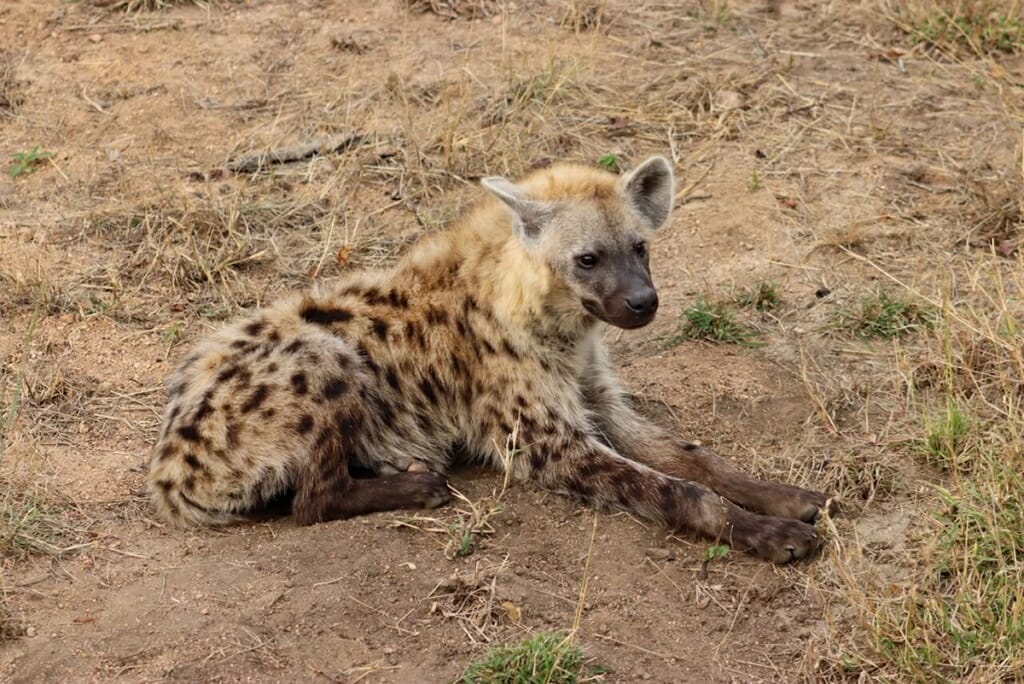
Sabi Sands is a 65,000-hectare private game reserve and a premier African safari holidays destination that shares an unfenced border with the world-renowned Kruger National Park. Featuring a savannah landscape with watering holes, dry riverbeds, lowed woodlands, and the perennial Sabi and Sand rivers, Sabi Sands is home of the famous “Big Five”, a great variety of antelopes, zebras, giraffes and some of South African’s ultra-luxurious safari lodges.
The advantages of staying in Sabi Sands are that only guests are allowed in the reserve, the lodges are very comfortable, the car is fully open and the guides are highly trained and can drive off-road. I did a sunset/evening drive on my first day in Sabi Sands and a sunrise drive with a bush walk on the last day. I only saw two of the Big Five and the bushwalk was very quiet.
However, I learned very interesting facts during the bush walk, such as: in the past pregnant South African women would make tea with elephant stool when they were not feeling well, hyena excrement is white because of the bones they eat and that giraffes eat it to compensate for the lack of calcium in their diet.
I adored my stay at the Sabi Sands bush lodge and my safaris and bush walk were some of the greatest experiences of my life.
Recommended by Pericles @ 7 Continents 1 Passport
Okavango Delta, Botswana
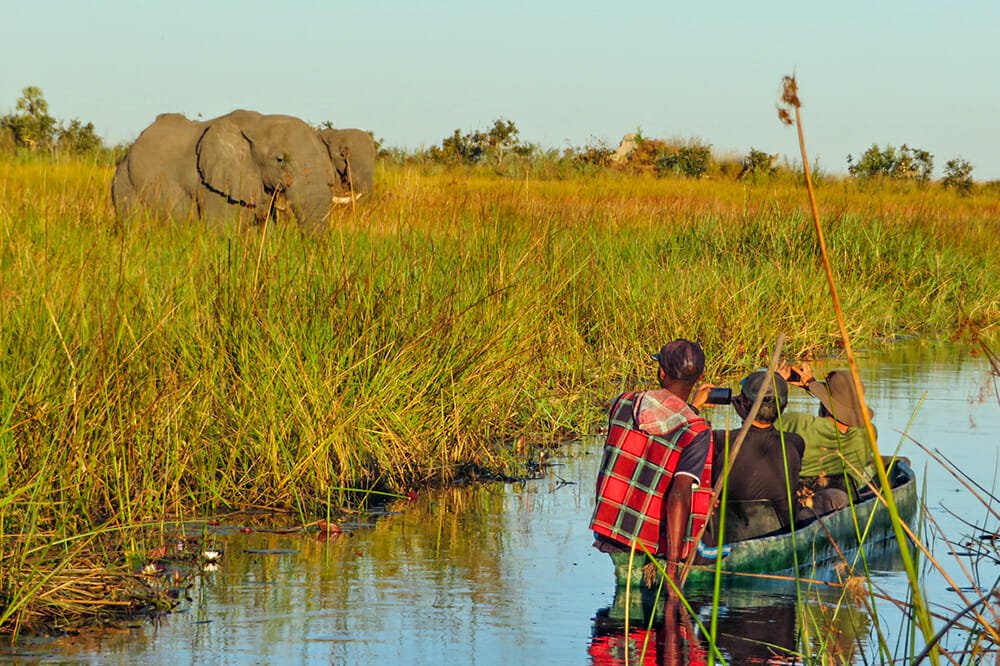
During my two months in Africa, my favorite safari destination was the Okavango Delta in Botswana. This area is unique because the main way to get there is by taking a traditional dug-out canoe, or mokoro, through the region’s unmarked waterways. Local guides lead visitors from the edge of the Delta near the city of Maun deep into the swampland.
Many tourists camp out in the Delta with their guides for a night or two, sleeping in the wild with hyenas and lions in the general vicinity. Our guides led us on a lengthy bush hike on one of the dry sections of land. This was a rare thrill since in most of Africa you have to remain inside your safari jeep during game drives.
During the hike and mokoro rides, our group spotted elephants, hippos, giraffes, zebras, ostriches, and baboons up close. We didn’t encounter any fearsome predators but saw lots of evidence of their presence: lion tracks, hyena scat, and the skulls of prey like wildebeest and kudu.
Visitors to the Okavango Delta can feel comfortable that their motorless canoes are not disturbing the wildlife or putting undue strain on the environment, and that their money is helping to support the local guides who lead them into the Delta. If you want to feel like you’re really immersed in the wildest parts of Africa, the Okavango Delta is an ideal destination!
Recommended by Scott @ Quirky Travel Guy
Chobe National Park, Botswana
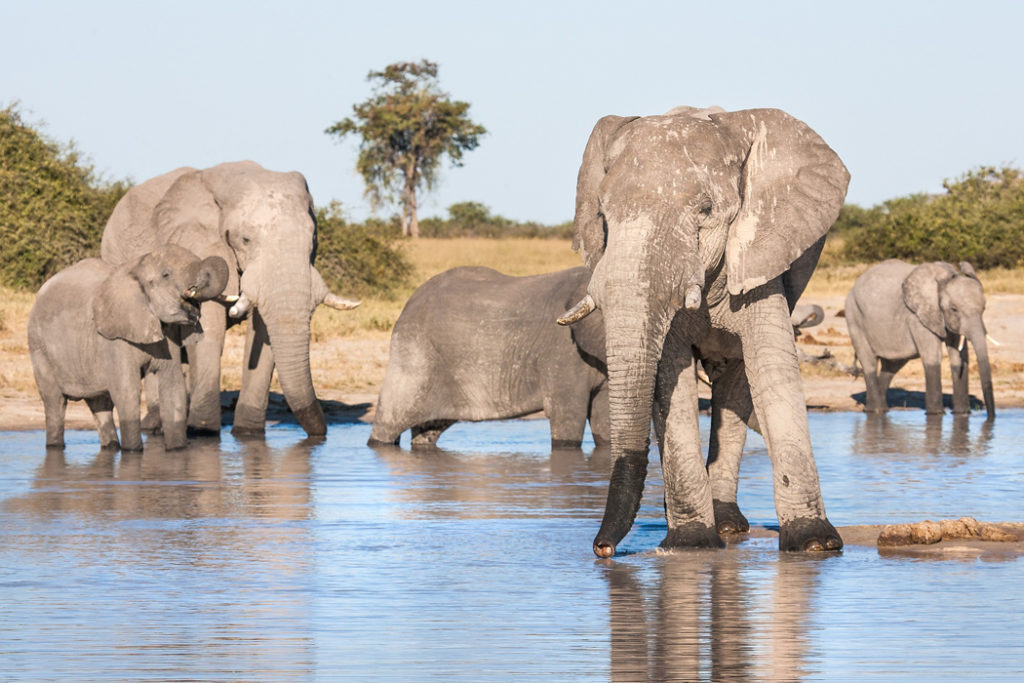
Chobe National Park in Botswana is one of the best safari destinations in Southern Africa that is also budget friendly. About a 2-hour flight from Cape Town in South Africa, Chobe can also be accessed by car or by boat from Victoria Falls in Zimbabwe.
What is amazing about Chobe is that all the animals are wild and free roaming as it is not on a private reserve and there are no fences or borders. You can find all the big five game (Lion, Leopard, Rhino, Elephant and Buffalo) in Chobe and it is not unusual to drive next to a pride of lions or a group of elephants during the game drives. Since the animals are free roaming there are fewer ethical concerns.
The safari can be conducted either in a traditional 4×4 open-air vehicle or on a boat. Depending on the package you book with your lodge, you can do a half day river safari first to see hippos and crocodiles before doing a full day (or multi-day) safari in a jeep.
There are different types of accommodation in Chobe National Park, ranging from luxury thousand-dollar per night hotels to budget-friendly camping options. Accommodations all provide game drives, usually twice a day including all meals and afternoon coffee. The experience of Chobe National Park is one to remember for a lifetime.
Recommended by Serena @ Serenas Lenses
Zambezi River, Zimbabwe
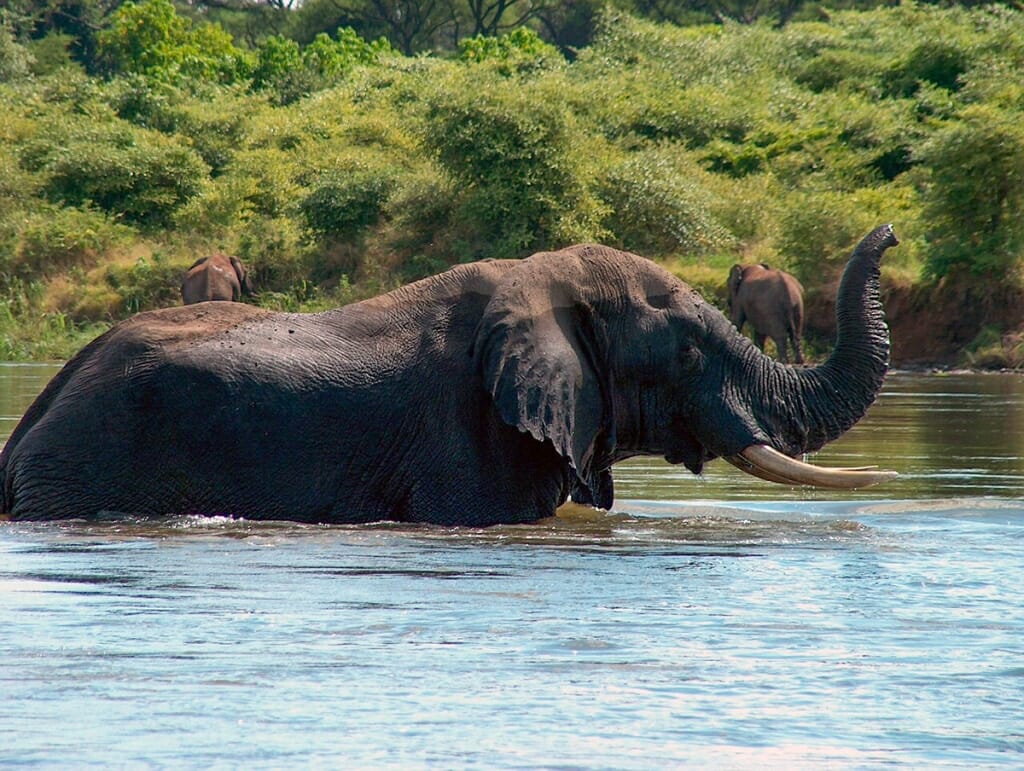
When visiting Victoria Falls, your closest opportunity to see some wildlife is to do a safari cruise down the Zambezi River. Only 20 minutes’ drive to the dock from town, a sunset riverboat is the only way to go. Ours cost $69 USD per person and included unlimited beverages. So as you can imagine I was in gin & tonic heaven being a true Brit.
Within moments of leaving the dry land we were already having encounters with hippos. Obviously, to ensure the best experience for the wildlife and us, we weren’t able to get super close with the vehicle engines on. However, the team were experts at knowing river currents, so would get us in position further away, then shut off the power to allow us to drift past the wildlife as close as possible keeping us and animals happy and safe.
On the river, we saw a range of bird life and fauna on the banks, along with crocodiles, hippos and gazelle. However, the true highlight during these two hours was watching a herd of elephant swim across. They swam from Zambia to Zimbabwe with their trunks held high for breathing and it was truly incredible. Only ten minutes after this, we saw a young bull elephant on a similar solo swim further down the river while the sun set in front of us – a moment I don’t think I’ll ever forget.
Recommended by Millie @ Millie Goes
Ol Pejeta Conservancy, Kenya
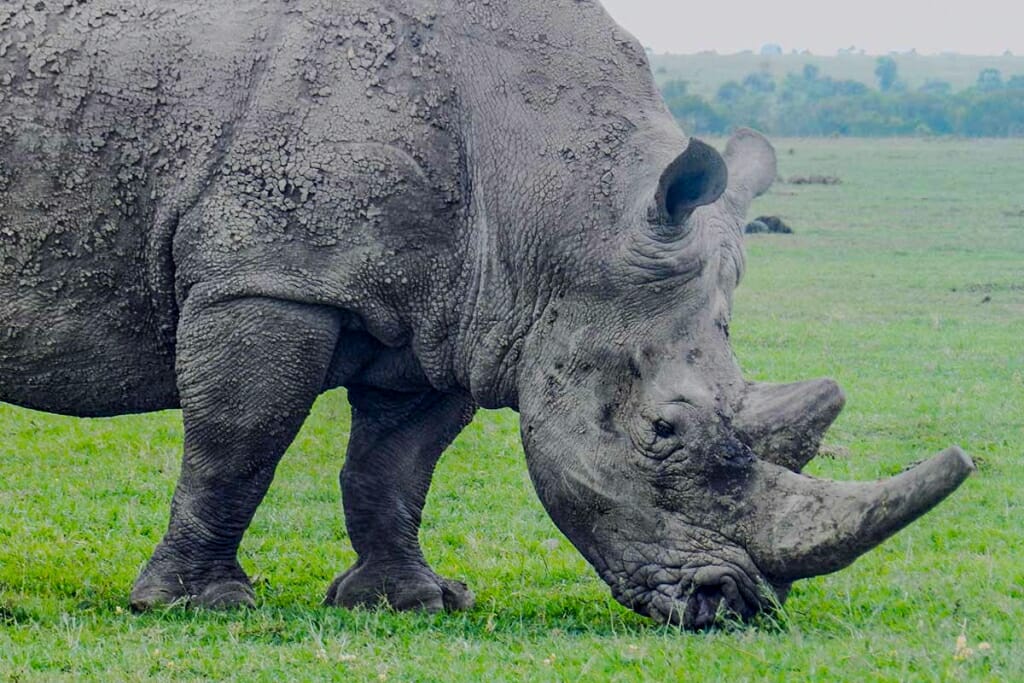
Set against the backdrop of Kenya’s tallest mountain and straddling the equator, it is a wonder that Ol Pejeta safari park isn’t better known. Renown for its pioneering conservancy efforts, this is an African safari park with a difference.
Heartbreakingly, Ol Pejeta is the only place in the world where you can see the last two existing Northern white rhinos. After the devastating death of Sudan, the last male, they are kept under armed guard protection. Due to excellent security and proper ecological monitoring, the population of black rhinos here has increased from 20 in 1993, to 113 in 2017.
If it’s the big five you’re after, Ol Pejeta has them all. Another huge draw to this seemingly undiscovered gem of a safari park is how comparatively empty it is – you really will be animal watching rather than people watching. In a time when it is all too common to be sharing your lion with a queue of other jeeps, Ol Pejeta is, quite literally, a breath of fresh air.
A huge advantage of this conservancy is that you can self-drive and camp here. Once night falls it’s just you and the cries of the wild animals. Watching a herd of elephants move silently past your tent in the moonlight is something you won’t forget in a hurry.
If you’re looking for a safari park that feels remote and real and puts the conservation of endangered species above all else, then Ol Pejeta should be high on your bucket list.
Recommended by Emily @ Two Get Lost
Samburu National Reserve, Kenya
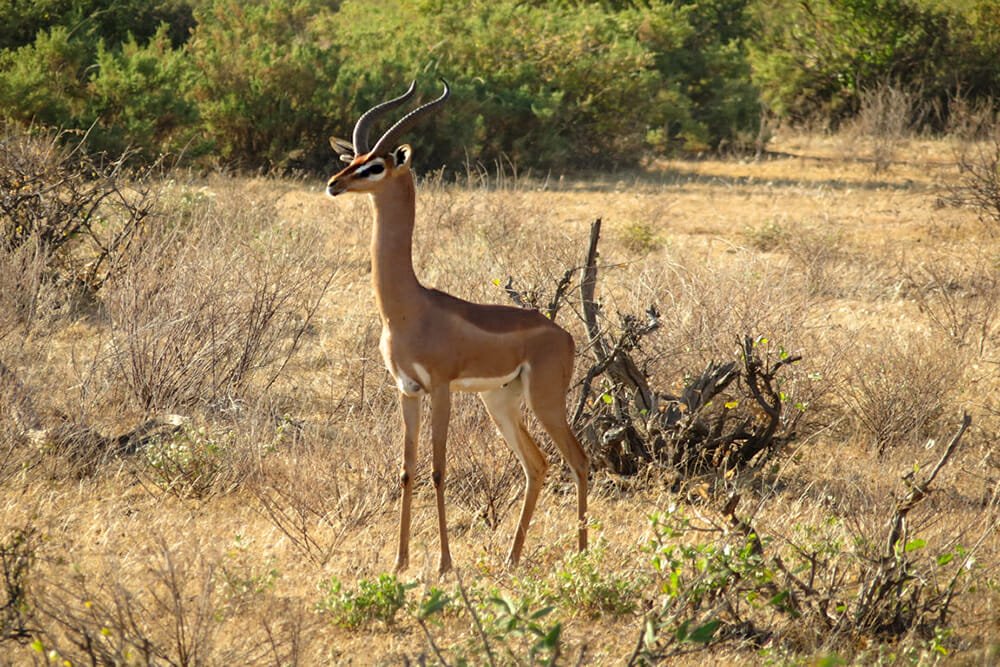
This remote, northern reserve in Kenya is famous for its dramatic and arid landscapes, tribal communities, and a rather unusual collection of animals. If you’ve already ticked the ‘Big Five’ off your list, you might consider checking out the ‘Samburu Special Five‘, only found here in northern Kenya.
They include the Beisa Oryx, Grevy’s Zebra, Somali Ostrich, Reticulated Giraffe, and perhaps most unusually, the Gerenuk, which is an antelope that stands on its hind legs to reach green leafy shoots in higher branches. Quite a peculiar sight.
Compared to many of the other Kenyan safari reserves and parks, Samburu is relatively little visited, which means you can often go for hours without bumping into other tourists. Animal viewing is strictly regulated here to minimise the impact on wildlife, so you won’t come across hordes of jeeps crowding around a sighting like you might in the more popular parks.
Game drives are the best way to experience the reserve, but bush walks are also offered, and there’s nothing quite like having breakfast on the banks of a dry riverbed, watching the animals trundle along using it as a highway, in their search for water. You’ll also see Samburu herdsmen walking with their thousands of cattle to find water, which is scarce in the drier months. It’s quite novel to be watching a herd of elephants one minute and cows the next, which is all part of daily life in Samburu.
Recommended by Heather @ Conversant Traveller
Nairobi National Park, Kenya
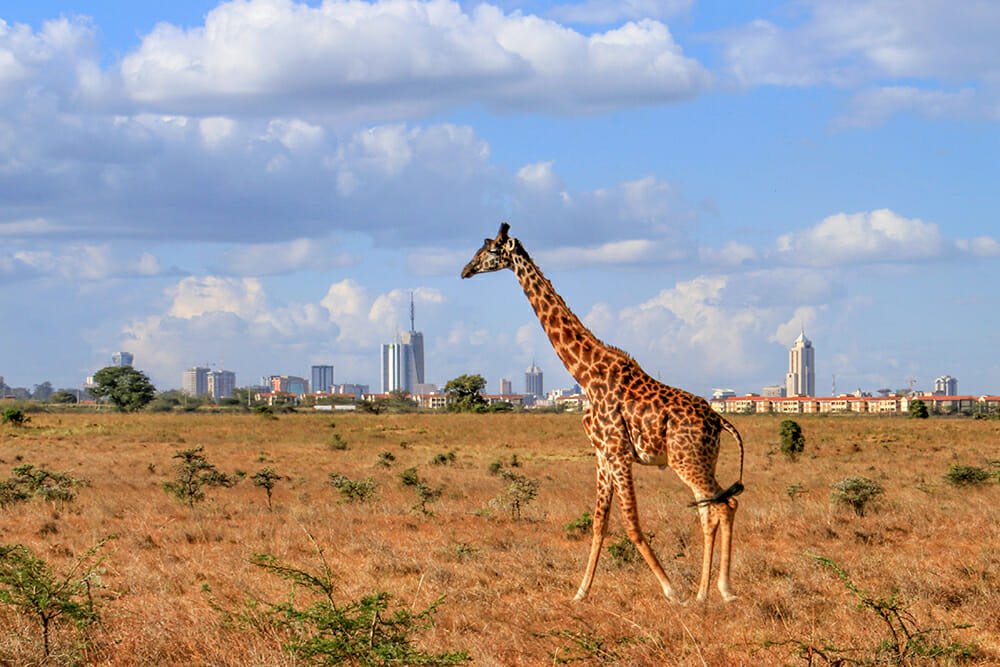
You might not think to choose Nairobi as a safari destination, but Nairobi is the only capital city in the world where a bustling metropolis and Africa’s big game animals live side by side. Nairobi National Park, located just a mere four miles from the city center, was Kenya’s very first designated national park and it’s possible to go on safari in Nairobi.
Go to sleep to the sound of lions roaring and have the safari experience of the luxurious camps of the Masai Mara for less at The Emakoko, a boutique safari lodge located in Nairobi National Park. With expert guides, you can explore Nairobi National Park on a game drive and see all of Africa’s Big Five except the elephant.
The park is also a sanctuary for black rhinos and is one of the best places in Africa to see rhinos in their natural habitat. Visiting the park definitely should be on your Nairobi bucket list, and you can feel good about your visit as proceeds go to the protection of the critically endangered rhinos as well as community outreach programs that help to minimize human-wildlife conflict.
Recommended by Jennifer & Tim @ Luxe Adventure Traveller
Serengeti National Park, Tanzania
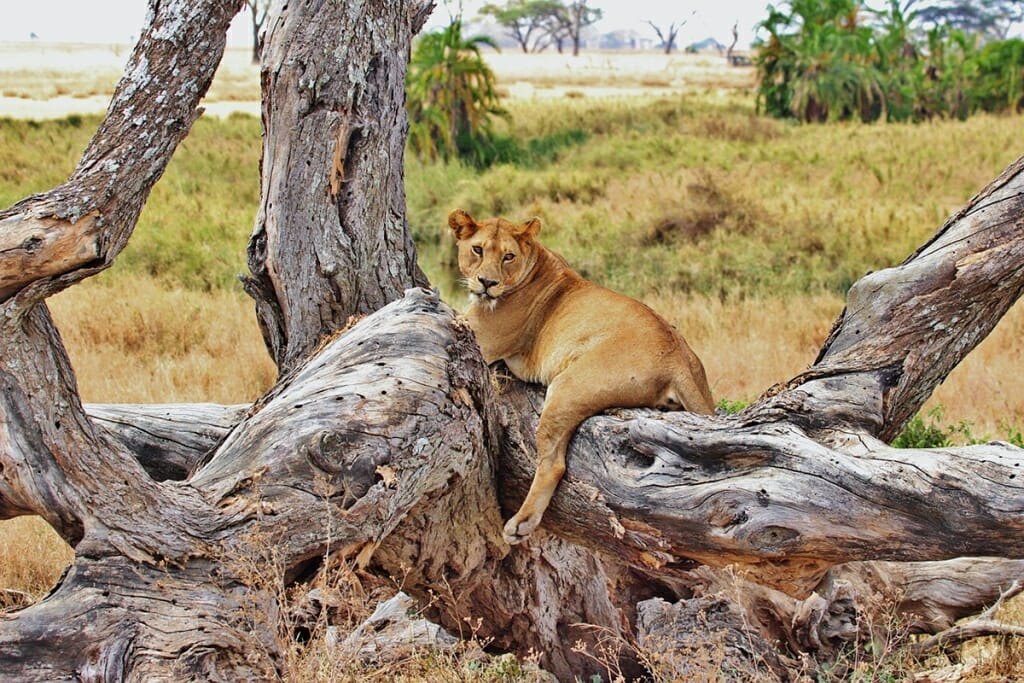
Serengeti National Park is the main highlight of the Northern Circuit safari in Tanzania. What better way to experience the endless plains than in a Jeep Land Cruiser with an open rooftop to view the wildlife?! Serengeti is huge at 14,750 km² so it’s best to take 3-4 days to travel through the area at a leisure pace with your guide.
We love the easy access to see wildlife even though there were hours where we didn’t see any animals. Try to find the Big 5 animals – elephants, buffaloes, lions, leopards, and rhinoceros (although we didn’t see the elusive rhino here). You’ll see plenty of giraffes, impalas, cheetahs, various birds, and even unique animals such as hyrax and dik dik, an adorable small antelope.
One of the fascinating aspects of Serengeti was experiencing the Great Migration of thousands of zebras and wildebeests. Surprisingly, the animals weren’t rushing but walking in an orderly line to their next destination along the trail. No matter what time you visit, they’ll still be there migrating. We even witnessed the circle of life with a pride of lions eating a wildebeest for breakfast and chasing away the jackals from gathering scraps.
To ensure the safety of the guests and to minimize disturbance to the animals, all guests had to stay within their Jeep during the safari. Our guide never drove off the road and stayed a good distance from the animals at all times.
Recommended by Jackie & Justin @ Life Of Doing
Tarangire National Park, Tanzania
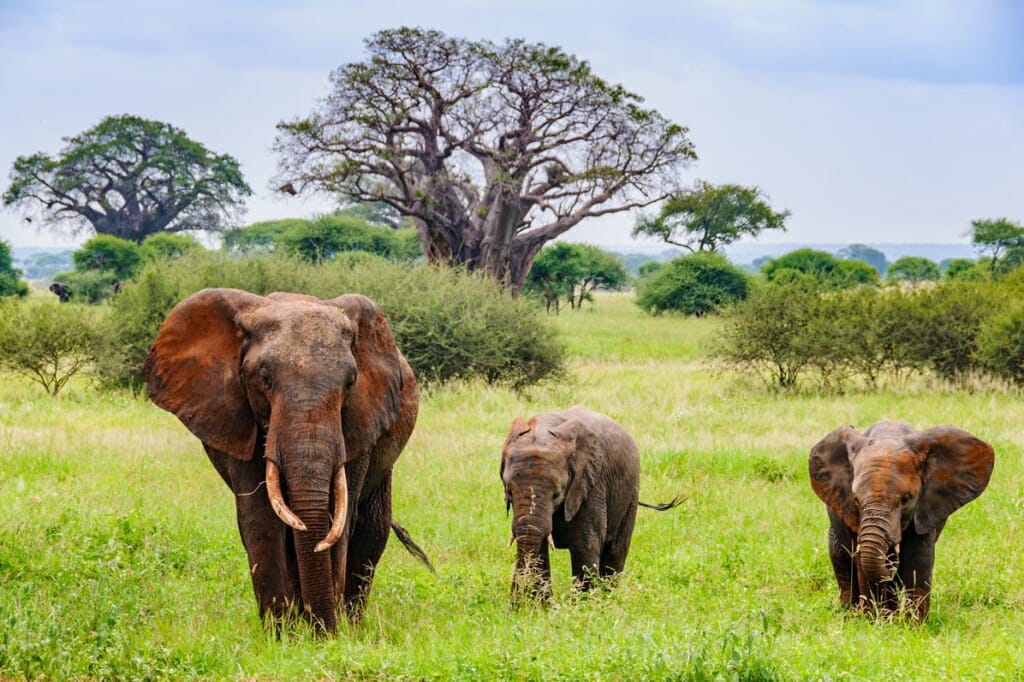
There are several national parks in Northern Tanzania, and the Tarangire National Park is one of the most spectacular amongst them. With a total area of around 3000 sq. km, it’s actually the sixth largest park in Tanzania. The name of the national park is devoted to the Tarangire River, which represents the principal water source of the ecosystem.
Tarangire National Park is most famous for its large elephant population (the largest in Tanzania) and the large number of giant baobab trees that you can find everywhere in the park. One of the major attractions of Tarangire is the migration of the elephants, which can be almost as spectacular as the animal migration in the Serengeti National Park.
In the rainy season elephants spread out in the whole area of the Simanjiro Plains, but when rains end in June, it results in the spectacular migration of these animals to the Tarangire River.
Of course, you won’t see only elephants in the national park, but lions, giraffes and many other smaller animals can be seen in large numbers. Safaris are realized in jeeps, and you can only get off the vehicles in designated areas. Elephants are usually very calm animals, but they can become aggressive and attack your vehicle, if they feel threatened, so it’s very important to respectfully behave during your African safari.
Recommended by Gábor @ Surfing the Planet
Ngorongoro Crater, Tanzania
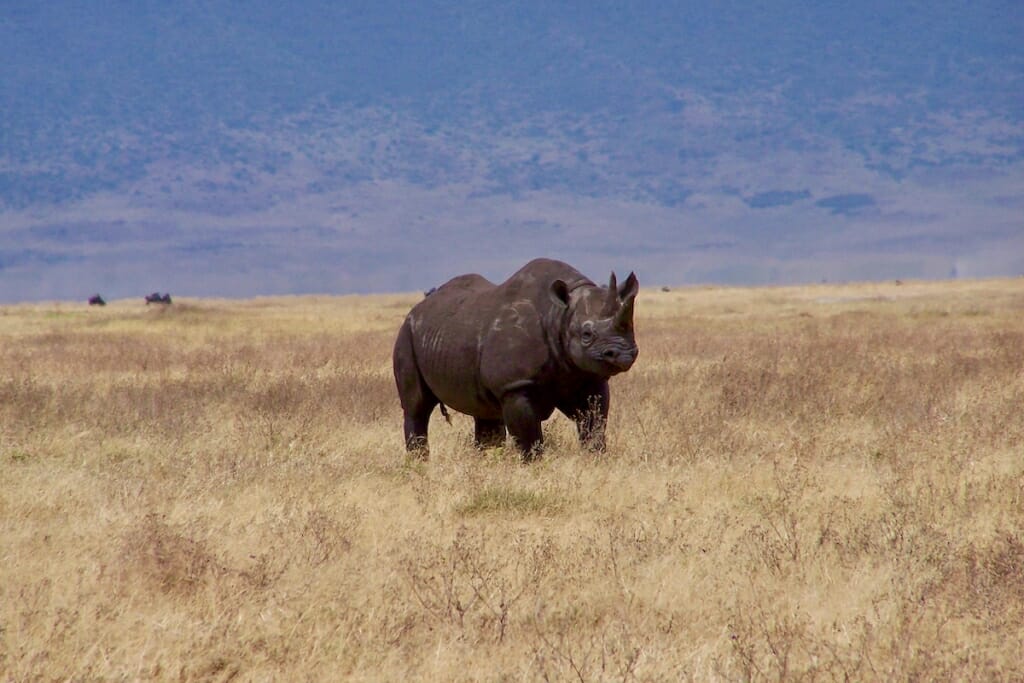
Ngorongoro Crater in Tanzania is a UNESCO World Heritage Site. It is the largest intact caldera in the world, formed from a collapsed volcano millions of years ago. With an estimated 25,000 animals within 100 square miles (260 square KM), Ngorongoro is one of the best places in Africa to view wildlife. In the crater, you have a good chance of seeing the nearly extinct Black Rhinos. There is abundant game (elephants, lions, wildebeest, zebra, buffalo, gazelle) but no impala or giraffe.
Given the small area, the Crater gets crowded with a lot of safari vehicles and (noisy) tourists. Often a mass of vehicles will descend on one spot. No so good for the animals. Our driver turned off the radio and we (quietly) roamed by ourselves. This is a much more ethical way to view the animals. There are also sacred areas for the Maasai that should be respected.
The drive to Ngorongoro goes through Rift Valley, one of the most important prehistoric sites in the world. Olduvai Gorge is a must-see on the way through the Rift Valley. Most people fly into Arusha and drive 4 hours to Ngorongoro Crater. Alternatively, you can fly to Manyara and drive an hour to the crater. The closest lodging is on the rim of the crater, though it is expensive.
Recommended by Sue @ Travel for Live Now
Cousin Island Special Reserve, Seychelles
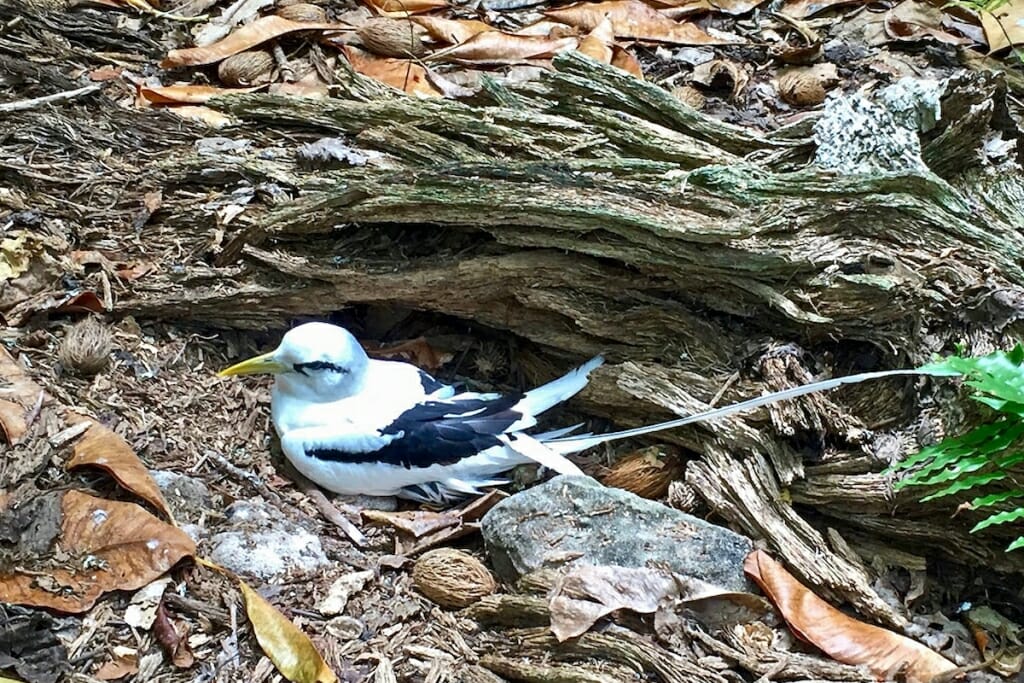
We’ve watched wildlife around the world, but one of the most beautiful and unexpected places we’ve found was in Seychelles. Being an isolated group of islands, there are a number of unique species that can be found here, many of which are very few in numbers.
You can see nesting Hawksbill Turtles, Aldabran Giant tortoises and some incredibly rare birds – including the Seychelles Paradise Flycatcher and Magpie Robin, both of which number less than 250 in the world.
One of the best places to view wildlife is the Cousin Island Special Reserve. This reserve was created to protect the incredibly rare Magpie Robin, which at the time numbered less than 25! This eco-tourism sanctuary lets less than 10,000 visitors a year on, meaning it has become a thriving environment for the local wildlife.
It is so strictly controlled, boats aren’t even allowed to moor, so you have to transfer onto one of the conservation boats that takes you the last hundred yards or so to the shore. The best time to visit is between September and March where you might be lucky enough to get a glimpse of a nesting turtle.
Recommended by Ben @ The Sabbatical Guide
Madagascar
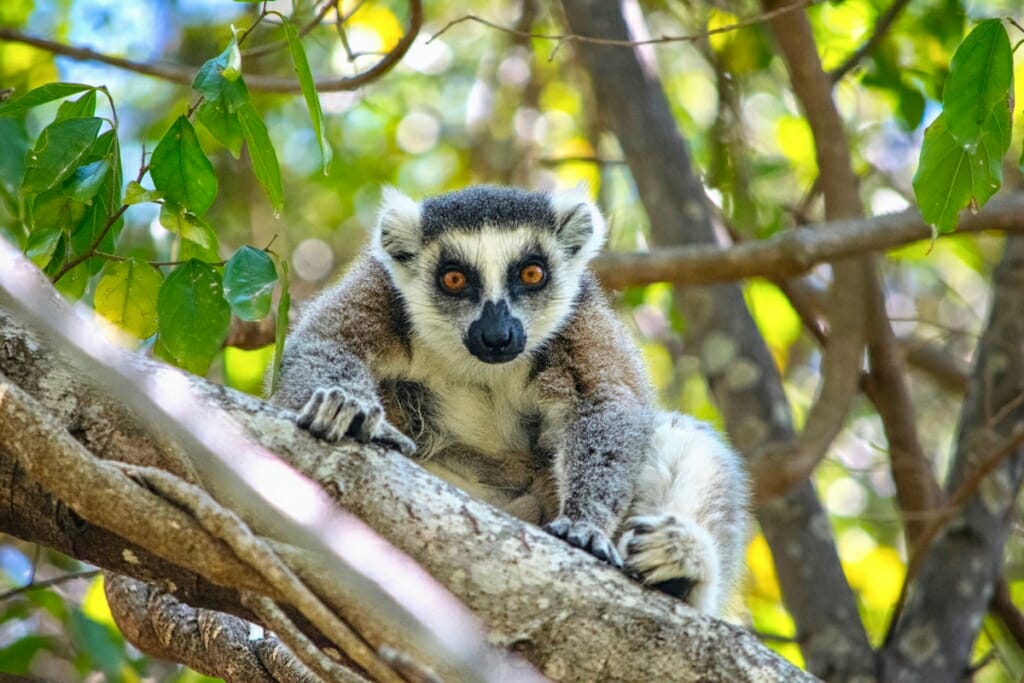
For wildlife lovers, Madagascar is heaven. This vast island off the southwest coast of Africa has been isolated for so long that species have evolved here that exist nowhere else on Earth. Every type of life, from soaring trees to tiny insects, is a new discovery for those who venture here.
The star attraction, though, is undoubtedly the lemurs. Some 101 different species have been identified, from tiny mouse lemurs to the biggest lemur, the indri, although visitors are likely to see around 15-18 species in the wild. Lemurs are divided into the four-legged variety, which scamper across the ground and leap from tree to tree like a monkey, and the fantastical sifakas, which move around on two legs in a bouncing dance and seem to defy gravity as they leap between branches like children on a trampoline.
Spotting lemurs in the wild depends very much on where you are and what you want to see. Some lemurs linger in trees close to major roads, and a good guide will be able to take you just a few minutes into the bush to spot them. Others, like tiny mouse lemurs, are easier to spot at night, whereas many species require a trek into the rainforest. Guides are skilled, passionate and local.
Deforestation across Madagascar has robbed many lemurs of their habitat, but the increasing tourist industry and actions to engage locals in the conservation process has raised awareness of the huge natural richness on their doorstep. The experience of trekking up forest paths, followed by a long scramble through undergrowth or down steep hillsides, makes the experience that much more special.
Recommended by Jill @ Reading The Book Travel
What is your favourite African safari holidays destination? Share your thoughts in the comments below.
More Wildlife Guides
- 13 Different Types of Bears and Where to See Them in the Wild
- Australian Animals – Guide to the Strangest Creatures on Earth
- When and Where to See Animals in the Wild: Guide to Wildlife Watching
- 5 Tips to Make a Wildlife Garden and Promote Biodiversity at Home
- Collective Nouns for Animals – Words You Need to Know for Your Next Safari
- Renaissance Cats in Florence – A Feline Lovers Guide to Florentine Renaissance Art
- Cheetah vs Leopard – How to Tell the Two Cats Apart
- All 40 Species of Wild Cats and Where to See Them in the Wild
- The 7 types of elephants and where to see them in the wild
- Amazing Wild Animals in Thailand And Where to See Them

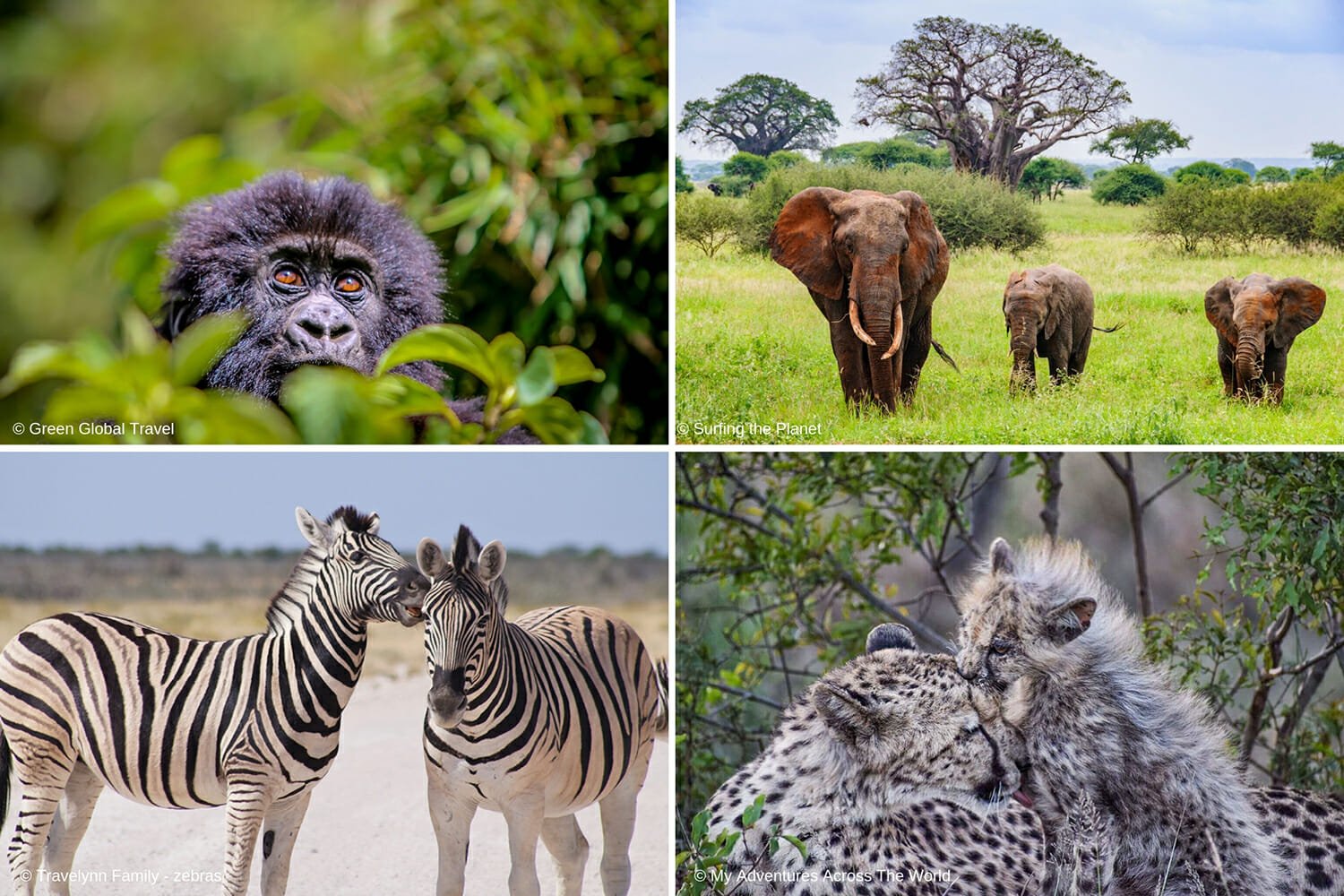
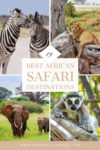
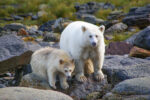
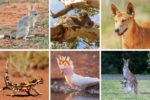
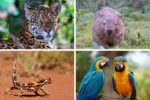

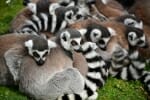

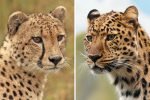
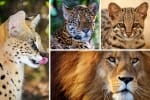

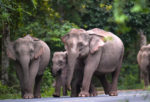
very perfect article, thanks for sharing it with us.
Thank you for sharing these wonderful African destinations! I’m only familiar with the places found in Kenya and Tanzania. That’s why I was so surprised that there were beautiful places to visit in Botswana, Seychelles and even in Namibia. I will definitely consider visiting those more than Kenya and Tanzania. I’d like to explore those sides of Africa as well and fall in love with the continent even more! Looking forward to reading more of your posts!
Great list!!! I agree with all of them and the couple I haven’t been to, I’ll be visiting in a few months! ?
This is my dream post because I adore Africa and all it’s wildlife. I’m heading to Namibia this year and can’t wait to visit Etosha National Park ?
Great list! I love safaris and I’ve been to 8 of these. I still have some way to go :-)
Oh wow! That’s very impressive
What incredible photos! We also got lucky and saw the rhinos in the Ngorongoro Crater in Tanzania. So cool! I would love to go back and see these other parks
Thank you, Megan. Africa always makes you want to come back!
I went on Safari this year in South Africa and I really fell in love with this place. I will definitely come back and visit some of the places which you recommend (Tanzania I think will be my next destination), thanks a lot!
I am glad this guide is useful, Zaneta. I agree South Africa is an absolutely beautiful place.
What a fantastic list!!
I fell like I wan to see them all, OMG.
It’s the first time I heard about Gerenuk, such an interesting animal.
Congrats ;)